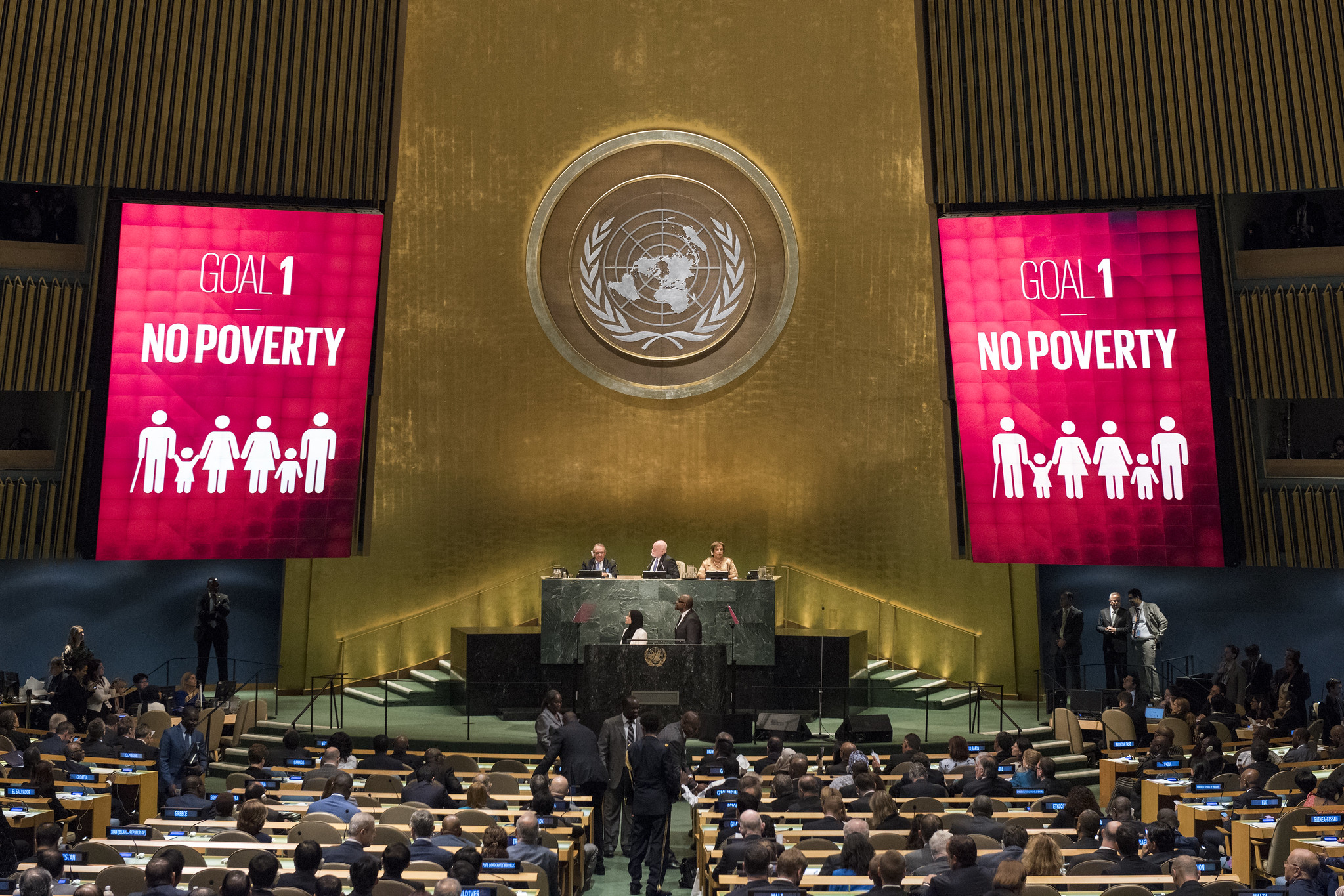On 24 and 25 September 2019, Heads of State and Governments will gather at the United Nations Headquarters in New York for the summit Accelerating the implementation of the 2030 Agenda for Sustainable Development. This is a crucial event for evaluating progress towards the 17 goals and 169 ambitious targets countries have set to eradicate poverty, achieve food security, empower women, secure the planet and foster peace and stability.
Yet, four years into the 2030 Agenda, progress on implementation of SDGs and key targets has been slow. The share of the world population living in extreme poverty has declined somewhat to 8.6 percent in 2018, down from 16 percent in 2010 and 36 percent in 1990. At the current rate 6 percent of the world population will still be living in extreme poverty in 2030, missing the target of less than 3 percent. This begs the question of what can be done to put these and other indicators on the right track to overcome this deficit and ensure no one is left behind?
The land community, represented by a diverse range of actors, including policy makers, CSOs, donors and others are committed to review and measure progress made towards achieving land related targets in the SDGs, particularly targets 1.4 and 5.a. on securing land tenure rights. We believe that achieving land related targets are crucial factors necessary to tilt poverty scales in favor of the poor and vulnerable communities and countries. However, we are unable to answer this question definitively, as most countries are yet to collect land tenure data and report on land indicators 1.4.2 and 5.a.1 on securing tenure rights, among other land indicators.
Can a direct link be drawn between SDG indicators related to land tenure security and those related to poverty and hunger, gender and income inequality? ‘Yes’ is the likely answer, but there is an urgent need for data to measure and validate such relationships. According to the Voluntary Guidelines on the Governance of Tenure, securing land tenure rights and ensure responsible land governance is key to achieving the SDGs.
Nevertheless, most National Statistical Systems (NSSs) and custodian agencies responsible for collecting data on the SDGs are yet to rise up to this challenge for a number of reasons including limited technical and financial resources. New types of data that require the involvement of additional data producers need to be integrated into the global reporting framework in order to ensure all parts of the agenda can be reviewed. This challenge affects most of the land related indicators in the SDGs including 1.4.2, 5.a.1 and 5.a.2.
1.4.2, 5.a.1, 5.a.2 still remain in Tier II, which means their respective methodologies have been established but no data has been reported to the UN Statistical Division. There is a serious risk that failure to collect data and progressively report on these land indicators could result in them being dropped from the SDG monitoring framework. Urgent action is needed to support national data collection and reporting on these indicators, which is the only sure way to secure their place in tracking progress against key land targets in the SDGs.
There are some efforts already underway including that by custodian agencies in supporting country data collection efforts, analysis and reporting on land indicators and dissemination of approved methodologies and data collection tools. National Statistical Organisations are receiving capacity building support to integrate questions in relevant surveys at the country level, and progress on data collection at the country level is expected to continue throughout this and next year.
In an effort to assess what land tenure data is actually available from countries and to disseminate a joint module for data collection for indicators 1.4.2 and 5.a.1, the Global Land Indicators Initiative (GLII) has initiated a land tenure data drive at the country level. GLII contacted National Statistical Organisations and land registries in 141 countries globally between April and July 2019, and at the time of reporting had received feedback from 50 countries. As a result of the data drive, 10 countries have shared their land related datasets on tenure security, and numerous others have expressed interest in collecting data on these indicators as well as a need for capacity building support on the global methodology.
The data drive has demonstrated that there is a significant lack of sex disaggregated and globally comparable data to report on land indicator 1.4.2. The joint questionnaire module - developed jointly by custodian agencies UN Habitat, World Bank and FAO - for measuring indicator 1.4.2 and 5.a.1 is a great resource to facilitate and guide country level action on data collection and reporting. However, many countries need technical and financial assistance to integrate essential questions in relevant national surveys. This is an underlying problem to tracking progress on land related targets that the SDG summit must address in order to achieve SDGs.
The summit presents a crucial moment to evaluate progress towards achievement of the SDGs and address shortcomings that may deter governments from monitoring progress and ultimately stay on track to achieving key targets including those related to land. Land related SDGs are crucial for the overall success of the 2030 Agenda and this is an opportunity for governments and stakeholders alike to ensure national data institutions have the necessary technical and financial capacities to make data collection and reporting on SDGs a reality.
This blog was adapted from the GLII Briefing Note: Status of Land Indicators, SDGs Progress 2019 and Related Efforts.

